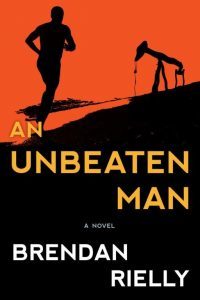Kathy Lynn Emerson's Blog, page 54
January 13, 2017
Weekend Update: January 14-15, 2017
 Next week at Maine Crime Writers, there will be posts by Susan Vaughan (Monday) Kaitlyn Dunnett/Kathy Lynn Emerson (Tuesday), Jen Blood (Wednesday), Jessie Crockett (Thursday) and Lea Wait (Friday).
Next week at Maine Crime Writers, there will be posts by Susan Vaughan (Monday) Kaitlyn Dunnett/Kathy Lynn Emerson (Tuesday), Jen Blood (Wednesday), Jessie Crockett (Thursday) and Lea Wait (Friday).
In the news department, here’s what’s happening with some of us who blog regularly at Maine Crime Writers:
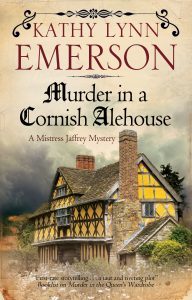 From Kathy Lynn Emerson: If any of you are in the UK, or are in the habit of ordering books from the Book Depository or Amazon’s UK branch, the third Mistress Jaffrey Mystery, Murder in a Cornish Alehouse is available now. It is set in England and Ireland in 1584 and both pirates and smugglers are among those suspected of murder. There’s also political skullduggery. Of course there is. It’s the sixteenth century. The US publication date for both the hardcover and the ebook is April 1st. No foolin’.
From Kathy Lynn Emerson: If any of you are in the UK, or are in the habit of ordering books from the Book Depository or Amazon’s UK branch, the third Mistress Jaffrey Mystery, Murder in a Cornish Alehouse is available now. It is set in England and Ireland in 1584 and both pirates and smugglers are among those suspected of murder. There’s also political skullduggery. Of course there is. It’s the sixteenth century. The US publication date for both the hardcover and the ebook is April 1st. No foolin’.
Maureen Milliken, Bruce Coffin, Jen Blood and Vaughn Hardacker will present a Death & Desserts panel at the Carrabassett Valley Public Library, 4:30-6:30 p.m. today (January 14). Come for the death, stay for the desserts! The authors will sign and sell books as well.
An invitation to readers of this blog: Do you have news relating to Maine, Crime, or Writing? We’d love to hear from you. Just comment below to share.
And a reminder: If your library, school, or organization is looking for a speaker, we are often available to talk about the writing process, research, where we get our ideas, and other mysteries of the business. Contact Kate Flora
Talking about living and writing in the great state of Maine
When we Maine Crime Writers aren’t writing about the great state of Maine we’re often talking about writing in the great state of Maine. One of the fun things about being a mystery writer in Maine is that so many people want to talk to us about it.
The Maine Crime Writers has a panel we call Death and Desserts. And yeah, it’s just what it sounds like. We talk about Maine, writing, crime and mysteries, and then everyone eats.
Tomorrow (if you’re reading this Friday and yeah, I know I posted it late), I’ll join fellow Maine Crime Writers Bruce Coffin, Jen Blood and Vaughn Hardacker at the Carrabassett Valley Library from 4:30 to 6:30 p.m. We’ll talk about writing in Maine. And then we’ll eat!
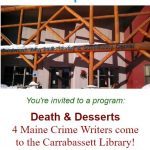 What? You thought Carrabassett Valley was only for skiers in the winter? Come on! It’s beautiful, even when you’re not careening down a snowy mountainside at 70 miles an hour. And that’s one of the things that makes Maine so great.
What? You thought Carrabassett Valley was only for skiers in the winter? Come on! It’s beautiful, even when you’re not careening down a snowy mountainside at 70 miles an hour. And that’s one of the things that makes Maine so great.
“Writing in Maine” may seem like a small topic, but it’s not. Our books take place all over the state (and in Jen and Vaughn’s cases, sometimes out of state). We have wildly different characters and cover all corners of the genre. Maine’s diverse and talented pool of crime and mystery writers means there’s an endless pool of information to draw from.
I’m excited, too, about being in Carrabassett Valley, up in Franklin County. That’s the heart of my Bernie O’Dea mystery series, and it’s always fun to talk about my books where they take place.
I know you’re getting cabin fever. The weather is supposed to be beautiful. So come on up to the library and check us out. Did I mention the desserts?
Maureen Milliken is the author of the Bernie O’Dea mystery series. Follow her on Twitter at@mmilliken47 and like her Facebook page at Maureen Milliken mysteries. Sign up for email updates at maureenmilliken.com. She hosts the podcast Crime&Stuff with her sister Rebecca Milliken.
January 11, 2017
A Town Without City
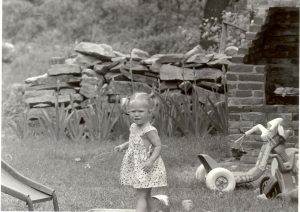
Lisa by the barbecue and stone wall behind the Chelsea house.
John Clark returning to wrap up our 27 years in Chelsea. First off, one thing that struck Beth and I when we moved to Hartland was the immediate sense of community. Yes, it was a hardscrabble town with plenty of problems, but people tended to come together and more importantly, they knew what they weren’t.
Chelsea never quite figured that out. There was no town center, half the town had Augusta phone service and mail delivery, the other half got both from Gardiner. The school went as far as eighth grade and then kids had to pick a high school. Our daughters attended Cony, some of their friends went to Gardiner, a few to Hall-Dale and even fewer to Erskine Academy in South China. When the budget got squeezed, high school bus service was eliminated and the dropout rate jumped proportionately. We had some amazing teachers at the local school, notably the art teacher, Sandra Leinonen. She had a lasting impact on both Lisa and Sara. Beth and I were involved as much as our schedules permitted. I served as PTA treasurer while Beth was on the school board for one term. (That cured her of ever doing so again). One of the more rewarding things I did was go in and read to the third graders. Most of them had never seen a man near a book, let alone one actually reading. It was eye-opening to watch things change. The first time, several kids distanced themselves from the group, pretending the activity was uninteresting. By week three, that same group was in the front row and completely involved.
Beth got a Girl Scout troop started and had several years of success. I bet there are former members who still remember some of the trips they went on, including an overnight at the Boston Museum of Science. She also helped in the school library, keeping it open for three summers.
Like any Maine town, there were memorable characters, some good, some not so good and a few that danced along the line of evil. Town meetings brought out all three and like every town meeting I’ve ever attended, there was always an issue that for no apparent reason took three times as long as necessary, there were rude comments tossed back and forth, while the town drunk kept forgetting what article was under consideration and demanded an explanation he’d just gotten three minutes before. I served on the planning board for years, six as chairman, so I knew very well who was likely to blow up over what. Wic Street a Connecticut native with a college degree who was a dairy farmer in town always showed up in manure decorated overalls and brought order and sense, more or less to heated discussions.
Even he and the other level-headed citizens weren’t able to quell the insanity when Squirrely Shirley and a bunch of not terribly bright, but loud townsfolk got it into their heads that the school budget had to be cut with a double bitted ax. That was an eye opener for our daughters. The town meeting had to be postponed twice. The first time it happened because a riot was about to break out. The second time, cops were present, but there wasn’t enough room, so it was moved to the Crystal Falls dance hall. Three armed sheriff’s deputies and one state trooper were present to keep order. Both Sara and Lisa gathered their courage and spoke in support of programs like art and the library, explaining how much they had benefited from them when moving on to high school.
Chelsea had its share of really decent folks. When we moved there, the former owners told us to avoid the grumpy old man across the road. Not knowing any better, I avoided introducing myself. One afternoon, I was under Beth’s VW bug changing the oil, when I heard footsteps and then saw feet standing a short distance away. After putting the drain plug back in place, I slid out and there was the supposedly grumpy man from across the street.
That was my introduction to Sam Morrison who became like a second father as time went on. He’d retired from the VA earlier that year and was bored silly. It took a while to realize that Sam was a man of few words. That turned out just fine. We developed a perfect relationship. I talked, Sam listened. We started going fishing together, first in brooks, then on the ice. One of my favorite moments with him was when he caught a nine pound togue and took first prize at the Sheepscot Lake fishing derby. Another was when I took him to Fenway Park. There was a couple behind us in their twenties on what was obviously a first date. She proceeded to get tipsy and flash the crowd by lifting her shirt. It didn’t take long for the whole bleacher section to start a chant of ‘show us your ****’ and for her to do a repeat performance time and again. I could tell Sam wasn’t sure whether to enjoy the show or feel embarrassed.
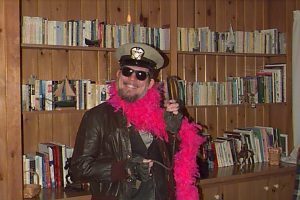
Maine’s Porn Czar in front of the new bookcases.
Sam’s wife Edna was a hoot. She’d talk about him at their kitchen table as though he’d died years ago and he’d just grin and remain silent. He let me borrow ladders and gave me shared custody of his rototiller. One of his favorite pastimes was to come over, sit on the stone wall and watch me sift dirt. I always told him I’d eventually find a gold coin, but never did.
Sam died of cancer and I was blessed to be one of his pallbearers. After his death, I made certain to drop over and visit Edna a couple times a week. During the great ice storm, she camped out in our living room because we had a wood stove, gas lights and a gas cookstove. When she had a heart attack, Beth took her to the hospital and stayed until her son arrived. Sadly she died the next day.
After Sara and Lisa were in college and Beth had returned to get her PhD. She took a job at the University of Maine in Orono teaching nursing. I changed jobs too, going from the Boothbay Harbor Memorial Library to the Maine State Library. I shortened my daily round trip from 70 miles to ten while she increased hers from twelve to 180. It wasn’t long before we realized that wasn’t a healthy situation, so we put our home on the market. We had built an addition with a poured foundation in the interim. It had a second bathroom with shower, a big family room with one wall all cupboards and bookcases (It took less than a year to completely fill both), a place for the washer and dryer that had been in our kitchen and a computer room off our bedroom with skylights. That, coupled with a big garden and twin grape arbors, made the place much more attractive than it had been when we moved in. It sold before we really found a place that was to our liking, price range and split the commute.
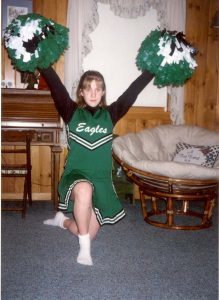
Lisa the Chelsea Eagle cheerleader in our new family room.
My final memory of Chelsea consists of the frantic realization that we were closing that day and still had a bunch of stuff that needed to be removed from the house. Fortunately we were able to stash some of it in Sam’s garage, thanks to the kindness of his son Maynard. The rest was piled on the lawn behind the house until I could make another couple of trips from Hartland to Chelsea.
I’ve only been back a few times since we left. There are more businesses, more winding roads to small subdivisions and a new and much bigger school. No matter. Our new place in Hartland felt more like home in a week than the one in Chelsea did after 27 years.
Do you have vivid memories of a former residence?
January 10, 2017
Literary Adventurer Plots Her Next Journey
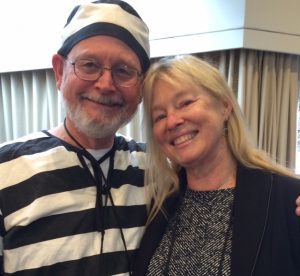
With William Kent Krueger at the New England Crime Bake
Kate Flora: I’ve written here before about the perplexing challenges presented to today’s writer about balancing time for writing with time for marketing, tweeting, facebooking, and generally staying visible to readers on all the various platforms. It’s exhausting. If you read Lea Wait’s blog post last week, you probably felt tired just trying to process all that she does. Earlier this year, Jen Blood did an amazing post about the platform building she did before launching her latest mystery http://mainecrimewriters.com/wp-admin/post.php?post=20794&action=edit. Dale Phillips guested with us to give advice about audio books http://mainecrimewriters.com/wp-admin/post.php?post=11395&action=edit. Maureen Milliken attended a workshop on podcasting and now she’s turning her hand (or voice) to that. The truth is that it never ends. We don’t really know what works so we try things on. And few of us dare relax for fear we’ll disappear from the screen and never be heard of again.
A while back I blogged here about platforms and branding. I had, at the time, been admonished by my agent that I needed to choose one area in which to write–fiction or nonfiction, mystery or suspense, etc.–and stick to it. In the process of evaluating what my brand might be, I took a look at what I write and came away confused.
 Here’s what I write–so far–and why I am uncertain that I want to stick to one area.
Here’s what I write–so far–and why I am uncertain that I want to stick to one area.
Among the books I’ve written, there are eight Thea Kozak mysteries, best described, in the shorthand of the business, as “strong woman, amateur P.I.” There are five books in my Joe Burgess police procedural series. There is a stand-alone, multi-viewpoint suspense novel, Steal Away, written under the pseudonym Katharine Clark. There are two true crime books, Finding Amy and Death Dealer. Most recently, there is Roger Guay’s memoir, A Good Man with a Dog. And in the pipeline for publication in 2017, Shots Fired: The Myths, Misconceptions, and Misunderstandings about Police-Involved Shootings. This last, co-written as Finding Amy was with retired Portland Assistant Chief Joe Loughlin, is interviews with officers who have been involved in shooting events, and is very much nonfiction.
So it appears that I write women’s fiction, police fiction, true crime, memoir, and
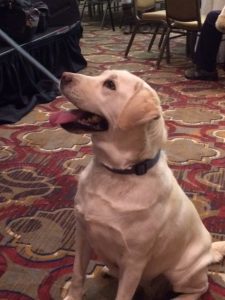
Saba, trained to find cadavers and evidence, at the New England Crime Bake
nonfiction. I have also had around twenty short stories published, including the recently published collection, Windward, and the forthcoming collection by and about the police: Busted. The only unifying factors seem to be crime and the police. And despite my agent’s advice, the truth is that I have loved working on all of these things, been fascinated by the challenges of learning, and working in, different genres, and have met people who will be life-long friends. And some very special canines. Rather than trying to narrow my focus to one arena, I’m enjoying the adventure of exploring many, and deeply curious to see what comes next.
It’s hard, yet exciting, to be forced to see the world in new ways. It’s something I carry with me that makes me notice the colors and shapes of the world around me, as well as the characters in it.



My literary adventures come from phone calls, from casual conversations, from my perpetual habit of helping people with their writing. I never know where the next challenge will come from. But, as we enter 2017, I am taking some time off from writing to figure out where that “next” is.
Here are some of the choices, and challenges, for the next year:
I am 40,000 words into the next Thea Kozak mystery, Schooled in Death.
I have a suspense novel about a teacher accused of misconduct with a student, called Teach Her a Lesson, that needs yet one more revision. This will be the 7th or 8th, and I’ve been working on this book for ten years.
I have another book in the pipeline, Runaway, best categorized as romantic suspense, that is sitting in a drawer with a bunch of editorial suggestions waiting for me to do one last tweak.
I have the plot for the next Joe Burgess rumbling around in my head, wanting to be let out.
I have a novel about remembrance and loss, Memorial Acts, that has a saggy middle and needs a rewrite.
And Level Best has just announced a new short story anthology is open for submissions.
It is very hard to figure out which of these projects to tackle first. Or to know whether something will come sweeping in from the wings and knock everything else from the running.
Once, several years ago, I had two stories in my head, competing for my time. I decided to sit down at my computer on January 2, and see which book wanted to be written more. Joe Burgess won. This time, all the characters are screaming for my time and attention, and I can’t seem to choose.
Any thoughts, dear friends, on how to figure this out? Or shall I, as I have dubbed myself a “literary adventuress,” try something completely new?
January 9, 2017
The Importance of Scars
Hi all. I’m in Italy so I’m repurposing a blog I previously wrote for International Thriller Writers about the importance of scars. Let me know how scars play a role in your characters’ lives!
When Shannon, our middle child and oldest daughter, was little, she fell down some steps and got a nasty cut under her eye. After it healed, she was embarrassed about the faint, white scar. To make her feel better, I told her about the many scars I have: the one where I split my chin open as a toddler while clambering up a wall at my grandfather’s funeral; the one where I stapled my thumb as a third-grader because a friend said the staple wouldn’t go through my skin; or, perhaps best, the one where I split the back of my head open engaging in rock wars during first grade.
The point is not that I was, shall we say, a high energy child – my wife says if she’d been my mother, she would’ve killed me – the point is that while scars do remind us of pain we have suffered, scars also give us character. Scars have stories. Most importantly, scars show healing and the opportunity for growth. In AN UNBEATEN MAN, I quote Ernest Hemingway from A FAREWELL TO ARMS: “The world breaks everyone and afterward many are strong in the broken places.” Our scars may be where we are strongest.
I’ve blogged elsewhere about underdog characters in thrillers like Daniel Silva’s Gabriel Allon, Robert Ludlum’s Jason Bourne, Olen Steinhauer’s Milo Weaver, Steve Berry’s Cotton Malone, Gayle Lynds’ Judd Ryder and Eva Blake, and many others. We want our heroes to struggle, to have made mistakes. We want to see them strain against their limitations and then burst through, if not in glory then in grim satisfaction. We want them to have scars because it’s how we relate to them. We’ve all failed or been hurt. Hopefully, like the best thriller heroes, we’ve learned and grown (even if we haven’t saved the world).
Michael McKeon, the main character in AN UNBEATEN MAN, may have more scars than most. He had a horrific childhood and has never recovered from the fact that, he believes, people die when he’s not watching. His parents and sister died violent, drug-related deaths, leaving Michael alone as a young teenager. Alone and angry, Michael was a “street dog who liked to play in traffic” until he found himself at the Mission Possible Teen Center, where he met Hal, a Bowdon College professor, who would become his mentor and friend.
When we meet Michael, these scars have just been ripped open again. He is now a microbiologist at Bowdoin College and has discovered a microbe that can clean up any oil spill, no matter the size. That should be the breakthrough that defines a career, but Michael’s life is ruined when The Global Group kidnaps his wife and adopted daughter to force him to deploy the microbe against Saudi Arabia and Russia, to destroy their oil reserves, cripple their countries, and throw the world into chaos.
He already lost one family and he will do anything to save his wife and daughter. As one of the characters says about Michael: he’s in Hell and he’ll do anything to get out. Because of the abuse he suffered as a child, Michael draws lines in his life. He either loves or hates, which complicates his relations with others. As we see in AN UNBEATEN MAN, and as further develops in the second installment, THE PRODIGAL, his scars give the potential for growth and rebirth, but it will be painful.
The Mission Possible Teen Center is a real place in my hometown, Westbrook, Maine (now called the My Place Teen Center). I served on its board a few years back and recently had the honor of talking with its director and students about AN UNBEATEN MAN and the role that the teen center played in helping Michael McKeon live with and overcome his scars. It was very moving for all of us. Several of the kids volunteered that they were trying to write stories and asked how to make up characters. I suggested that they watch and listen to people around them and try to make the characters as real as possible, scars and all.
January 8, 2017
A Visit to the Thompson Ice House
Barb here. (Or rather there. I’m actually in Key West.)
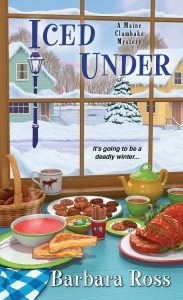 My latest Maine Clambake Mystery, Iced Under, explains how my protagonist, Julia Snowden’s family made their fortune in the “frozen water” trade. I had a lot of fun researching the ice industry and I’ve written about some of my sources here, on the Wicked Cozy Authors blog.
My latest Maine Clambake Mystery, Iced Under, explains how my protagonist, Julia Snowden’s family made their fortune in the “frozen water” trade. I had a lot of fun researching the ice industry and I’ve written about some of my sources here, on the Wicked Cozy Authors blog.
When a Maine friend told me there was an ice house museum on the Bristol peninsula, one of my favorite places in Maine, I was all over it.
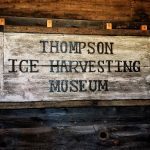 The Thompson Ice House Harvesting Museum is quite different from the industrial ice trade I describe in Iced Under. The museum is on a small pond, not a river. The ice harvested there was used locally, delivered to residents of South Bristol for their ice boxes as well as supplying a critical resource to fisherman and those involved in the transport of seafood caught locally.
The Thompson Ice House Harvesting Museum is quite different from the industrial ice trade I describe in Iced Under. The museum is on a small pond, not a river. The ice harvested there was used locally, delivered to residents of South Bristol for their ice boxes as well as supplying a critical resource to fisherman and those involved in the transport of seafood caught locally.
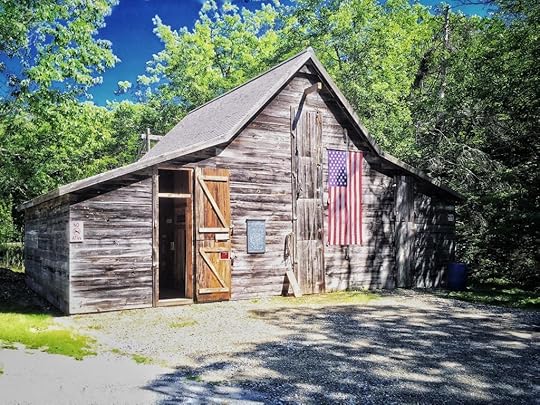
The ice house

The pond on a summer day
One of the coolest things about the museum is that every year, they still cut ice there in the old way. The date for ice cutting this year is February 19, 2017. Everyone who comes is welcome to help with the harvest.
Here’s a video from 2012. Be sure to stay until the end when they load the ice into the ice house. There’s an even better, more informative, video you can view when you tour the museum.
For those who may not want to freeze their rears off harvesting ice in Maine in February, the museum also sponsors an ice cream social in July, this year on July 2, 2017. The ice cream is handmade, cranked with ice from the ice house.

The ice cutter–kind of a cross between a snow blower and a plow
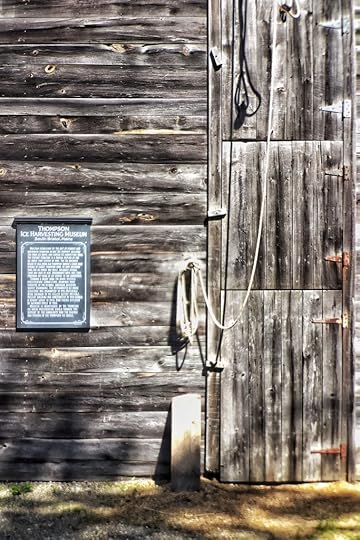
The Thompson Ice House Harvesting Museum exists because of the generous gift of the land and buildings by the Thompson family, along with diligent fundraising and volunteering by year-round and season residents of the Bristol area. I love these kinds of back roads attractions and completely recommend a visit next time you find yourself near Pemaquid.
(All photos by Bill Carito. If you like Bill’s photos and want to see more, you can follow him on Instagram @billcarito and @bill.carito.colorphotos and friend him on Facebook at https://www.facebook.com/bcarito.)
Save
Save
Save
Save
Save
Save
January 6, 2017
Weekend Update: January 7-8, 2017
 Next week at Maine Crime Writers, there will be posts by Barb Ross (Monday) Brendan Rielly (Tuesday), Kate Flora (Wednesday), John Clark (Thursday) and Maureen Milliken (Friday).
Next week at Maine Crime Writers, there will be posts by Barb Ross (Monday) Brendan Rielly (Tuesday), Kate Flora (Wednesday), John Clark (Thursday) and Maureen Milliken (Friday).
In the news department, here’s what’s happening with some of us who blog regularly at Maine Crime Writers:
“Death and Desserts” book talk and signing, featuring Bruce Coffin, Maureen Milliken, Vaughan Hardacker and Jen Blood, has been rescheduled for January 14 at 4:30 at the Carrabassett Valley Library.
An invitation to readers of this blog: Do you have news relating to Maine, Crime, or Writing? We’d love to hear from you. Just comment below to share.
And a reminder: If your library, school, or organization is looking for a speaker, we are often available to talk about the writing process, research, where we get our ideas, and other mysteries of the business. Contact Kate Flora
January 5, 2017
Living the Dream: The Writers’ Life
Authors write. No doubt about it. But in today’s world we also blog, speak at conferences, bookstores, libraries and schools, post on social media, send newsletters or notes to fans, and appear in venues as varied as 2500 person auditoriums and tables in farmers’ markets.
But, always, the building blocks of our writing lives are research, plotting, writing, and editing.
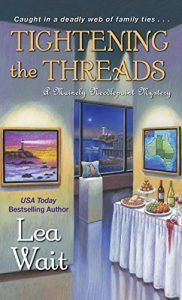
Lea’s Next Book, Which Ships March 27
In 2016 my eighteenth book was published, and I wrote numbers nineteen and twenty, which will appear in 2017, and one book that did not sell. I did promotional events on 43 days, wrote over fifty blogs, and sent over 7,000 postcards to fans telling them about new releases. And — oh, yes. I wrote proposals for six books, revised proposals for five others, and started research for another book.
I spent more time on marketing-related work than on actual writing and editing, even if you add in the preparation need for writing.
In 2017 I’m hoping to write more, even if that means a little less promoting. So far I have one contracted book due, one I’m hoping to finish researching and then write, and later this month I’ll be writing a proposal for three additional books in one of my current series, at least one of which would be written in 2017.
Yesterday I stopped in to donate some books to the elementary school in my town, and the librarian there (this is Maine — she’s also a published author,) said, “You’re living the dream!”
And I am. I’m living in the place I want to be, with the man I love, doing what I’ve always wanted to do. Every day I’m very aware of that, and very thankful for the life I’m living.
And, in 2017, I hope to write more, relax more, say “no” sometimes, and appreciate how lucky I am.
In the meantime, I’m cleaning out my desk, sorting stacks of accumulated folders, writing proposals, doing taxes, and planning for the next two books I’ll be writing and the next book I promote.
And – I’m also hoping to get a little more sleep in 2017.
Happy New Year to all my friends who are writers or readers! It’s time to begin again. And we’re lucky to be doing that.
January 4, 2017
Thanks to Mon Oncle
First: In the Shameless Commerce division, please put January 28 on your calendar for Local Writers at the Local Buzz café and wine bar in Cape Elizabeth, 4:00 to 5:00 PM. I will be reading from Solo Act and new work, along with Jeri Theriault, the talented South Portland poet. This monthly reading series is now in its sixth year. Founded in 2011 by poet Marcia F. Brown and essayist Penelope Schwartz, the series has featured over 130 area authors of fiction, nonfiction and poetry. It is now co-hosted by Brown and Portland poet Linda Aldrich. Hope to see you there!
In this reflective time of year and counting my blessings for being back in Maine, I got to thinking about how I wound up here the first time around. Unlike a native Mainer, my origin story in the state is a little more convoluted and rests squarely on the story of my uncle, Richard Clogston.
My namesake uncle was a bean farmer first, then a dairyman, in Starks, a not very large village to the left of Norridgewock and north of New Sharon. My mother’s brother, fourteen years older, he fought in World War II, earning a Purple Heart and a Bronze Star. I knew him better as mon oncle, living the charmed life up on the farm that I thought might suit me better than the suburbs of Boston.
My earliest summer memories are of riding the top of a truckload of beans to the cannery with my brother, bouncing green beans off the windshields of the cars behind us: no shirts, no shoes, no problems. We’d trail him into the barn to watch the milking, thrilled to learn new swear words when a cow’s tail switched him in the eye.
He always had two dogs, usually collies, with Scottish-sounding names: Mac and Bruce were the pair I remember most clearly. And he never, as far as I knew, had a girlfriend or a wife. I never heard more about that than my mother’s vague story about the girl who didn’t wait for him to come home from the war.
My brother and I loved being on the farm since we didn’t have to do any of the work: the dusty-hay and manure smells of the barn, the fact that mon oncle didn’t have to make his bed or do the dishes that piled up in the sink until he needed them. We even tolerated the nose-wrinkling, eye-watering two-holer out back. Ah, the romance.
When he came to visit us in Boston, I could tell all the closeness made him nervous—the traffic, the crowd of family, the fact that he had to go out on the porch to smoke his Winstons. And I know I picked up a sense of self-sufficiency from him, the idea that most of what you needed was work, the companionship of animals, a door to the outdoors. I was into my teens before I added a need for romantic companionship to my list of essentials. But I did, as we said then, know where he was coming from.
My brother came to his senses, went on to live and work in cities all over the country. I hopped all over the place too but always with an eye to being near places where I could lie down in a field and look at the sky, tramp around the woods, feel pine duff and dirt under my feet more often than asphalt. And I blame all that on mon oncle and the farm, where I learned to need the quiet and what I found outdoors.
Would he have been such a model for me if he hadn’t been in Maine? I doubt it. My family and friends elsewhere in New England worked for the gas company, were engineers, carpenters, construction workers, heavy equipment operators, and mechanics, kinds of work I was pretty sure I had no talent for. In the sixties and seventies, at least, I could see myself working on the land, growing things, living in the woods, though I certainly know now I was indulging a romantic notion of that work.
I never lost my taste for woods and pastures, though in my teens, my family started vacationing in the lakes of southern New Hampshire. There was more society there and less sense of living in nature, the woods thinned and scrawny from decades of pressure, at least where they hadn’t been clear-cut to build houses. But I would often hike up into the woods behind the lake and try to get someplace where I couldn’t see or hear the signs of human life.
Now, of course, I live in the city but it is a comfort to know that places like Starks are only a couple hours away. Maine is full of towns where you’ll rarely see tourists but they are in many important ways the essence of the state.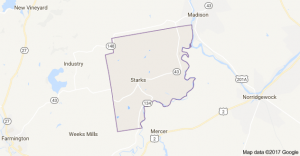
Starks, New Sharon, and towns like them informed what I hope are my best values: love of work, love of land, responsibility to my neighbors and my community. I hope they inform my writing as well. I might never have thought much about any of that without mon oncle and that would have been my loss as much as anyone else’s.
January 3, 2017
A Car is as Telling as a Name
By Brenda Buchanan
One of my beta readers jotted an interesting question in the margin of an early draft of my first Joe Gale book.
Does the reader really need to know what kind of car Joe drives?
I didn’t even have to think about it. Wheels always matter, at least to me.

In my imagination, Joe Gale’s car looks like this.
Joe drives an aging Subaru station wagon, which says so much about him. (By the third book in the series he’s actually on his second Subbie, having totaled his first one during Cover Story.)
Joe’s a loyal Subaru guy because his job as a newspaper reporter requires him to drive all over the state in good weather and bad.
He carries a lot of gear, and with the back seat down, a Subaru wagon is almost as versatile as a truck. And every Subaru model is equipped with all-wheel drive, making it the all-but-official car of the State of Maine.

If you’ve never owned one, you have no idea how much stuff these babies can hold.
If Joe drove a VW, he’d be a completely different guy.
To my mind, choosing the right car is as critical as getting a character’s name right. Take Paulie Finnegan, who appears in the parts of Quick Pivot that take place in 1968.
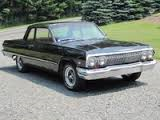
A 1963 Bel Air was not a sexy car.
Paulie was not a stylish fellow. He wore lace-up brogans, wash-and-wear shirts and heavy-framed glasses when they were decidedly un-hip.
In the summer of ’68 he drove a 1963 Chevrolet Bel Air. Solid car, but hardly flashy.
By contrast, as a young banker Jay Preble drove a 1968 MGB Roadster. Forty some years later he tooled around in a vintage Jaguar and his golf cart was tricked out to look like a miniature Mercedes-Benz.

Jay Preble’s car in 2014.
Was Jay a foreign car nut, or was he hiding his insecurities behind such high-tone wheels? You’ll have to read Quick Pivot to find out.
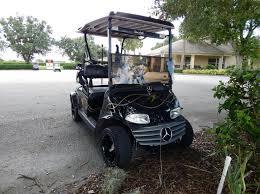
What does this say about a guy? I mean, really.
A related technique is to use a car to convey something about setting. Several key scenes in Quick Pivot take place on Peaks Island, where vehicular longevity matters more than style. Jimmy B. Jones—a minor character in the book—drives a rusty pickup truck with spring-sprung seats and a passenger door that can only be opened from the inside.
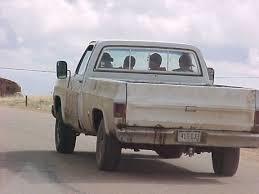
A quintessential island truck.
Jimmy’s durable wheels speak volumes about the quirky folks who live on a rock in the middle of Casco Bay, including Helena Desmond, who plays a central role in the book’s plot but, alas, does not drive.
A lot of the writers I read seem to put careful thought into fictional vehicle choice.
MCW blog-mate Dick Cass uses his protagonist’s wheels to tell us about Elder Darrow’s world view. In his fine first novel Solo Act, Dick describes Elder’s car: The Cougar’s black vinyl top was shredded, the yellow paint tinged faintly green as if it were molding. The rocker panels were perforated with rust holes, but it ran and it was paid for.
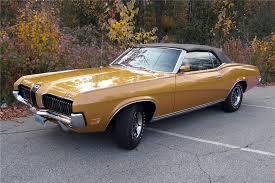
This could have been Elder Darrow’s car in its heyday.
This passage also tells readers something about Boston, the city where Elder operates his jazz bar, The Esposito. Anyone who has lived in that city understands the benefit of driving a car with a few dings and dents. Hub rotaries can be a dangerous place indeed for those in shiny new cars.
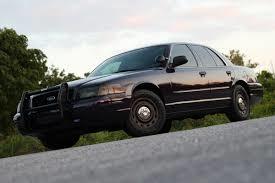
The iconic Crown Vic, at one time the first choice of cops and police procedural authors from coast to coast.
Cops like Bruce Coffin’s John Byron and Kate Flora’s Joe Burgess don’t drive Crown Vics anymore because Ford no longer makes the longtime police favorite. So Byron drives a Taurus with balky air conditioning and Burgess patrols Portland in an Explorer.
Our Massachusetts colleague Steve Ulfelder is a race car driver in real life, and his fabulous character Conway Sax uses his big Ford Trucks (an F-150 in Purgatory Chasm, an F-250 in Wolverine Bros. Freight & Storage) to chase down bad guys in a manner as entertaining as it is intimidating.

If you like hot car chase scenes, you need to read Steve Ulfelder’s books.
No post about the use of cars in mystery novels would be complete without mention of the unforgettable book where the car was an actual character, and a diabolical one at that, Stephen King’s Christine. That 1958 Plymouth Fury still haunts my dreams more than three decades later.
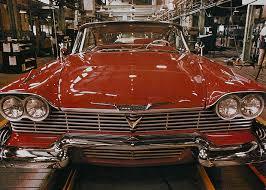
Just looking at a picture of it gives me chills.
Dear readers, do you notice what kind of car a character drives? What do you drive, and what does it say about you?
Brenda Buchanan is the author of the Joe Gale Mystery Series, featuring a diehard Maine newspaper reporter who covers the crime and courts beat. Three books—QUICK PIVOT, COVER STORY and TRUTH BEAT—are available wherever ebooks are sold.

